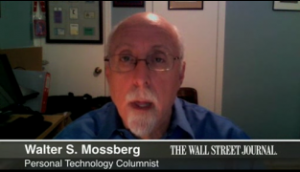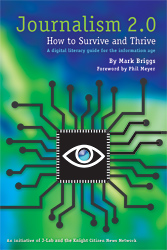How easy can digital video be? It is estimated that 13 hours of footage is uploaded to YouTube every minute.
The low cost and ease of use mean anyone can participate. The quality varies greatly, of course. Both in journalism and in the greater video ecosystem.
This debate about quality has strangled many news organizations. Unwilling to publish what they see as an inferior product, editors and photographers painstakingly edit and produce high-level work that, while great, simply takes too much time and effort. Then, when the pageviews are modest (at best), journalists start blaming video as a format and retreat to what they know best. (When was the last time an editor suggested dropping the education beat because the latest story only saw a couple hundred hits?)
Meanwhile, the quick and less polished video content on news sites often draws bigger audiences. This discovery has led several news organizations to start broadcasting video with cell phones from the scenes of news events. They should do more.
YouTube, Seesmic, Qik and others have changed the perception of what’s acceptable, even for news. When non-broadcast news organizations first started doing video, it was assumed that each project had to look as close to a standard evening news broadcast as possible. Those days are gone and it’s become acceptable to offer varying levels of quality from one news organization to another.
Just take a look at two very similar video features, one by The New York Times and one by The Wall Street Journal. Technology columnists David Pogue of the Times and Walt Mossberg of the Journal offer their product and service reviews in video each week, but the quality and production values of the Pogue videos are significantly higher than Mossberg’s.
And that’s OK.
 Pogue is a former Broadway accompanist and his personality drives the video reports with humor and creative story angles. He also has the benefit of producers from CNBC through a corporate partnership; the segments also air on the cable TV network. Characteristics to note:
Pogue is a former Broadway accompanist and his personality drives the video reports with humor and creative story angles. He also has the benefit of producers from CNBC through a corporate partnership; the segments also air on the cable TV network. Characteristics to note:
- shot in several locations
- other performers appear in the segments to help act out the story
- heavily edited with dramatic production values
- lead-in (opening credits and music)
- lead-out (ending credits and music)
- music throughout
- title overlays and grand transitions
 Mossberg, meanwhile, turns on a webcam in his home office and records his 5-minute review seemingly in one take. Characteristics to note:
Mossberg, meanwhile, turns on a webcam in his home office and records his 5-minute review seemingly in one take. Characteristics to note:
- lead-in (opening credits and music)
- lead-out (ending credits and music)
- product screenshots edited in
- little to no other editing (when Mossberg stumbles on a word, he apologizes and continues)
One looks like a TV show – because it is – and another is just a guy sitting at a computer. So why does the Wall Street Journal allow its content to compete with the New York Times on such a seemingly uneven playing field?
One reason is that the audience for video has become extremely forgiving and is now open to all levels of quality. Another is the bargain Mossberg has established with his audience. He is an authentic voice, having written a column in the Journal since 1991, who produces his content in video as a way to provide a different format and as a better experience than just text, since he can hold a device in his hands and show the viewer the product.
Unedited video streams from cell phones would have been unthinkable a few years ago in many newsrooms. They’re slowly becoming common practice. This shows how far some journalists have come in understanding their online audience.
They can strike a different bargain on the Web. They can provide video that isn’t perfect and in some cases isn’t that good. But if it’s authentic, if it takes a viewer to a news event or behind the scenes of somewhere important, it works.
 Mark Briggs
Mark Briggs  Posted in
Posted in 




